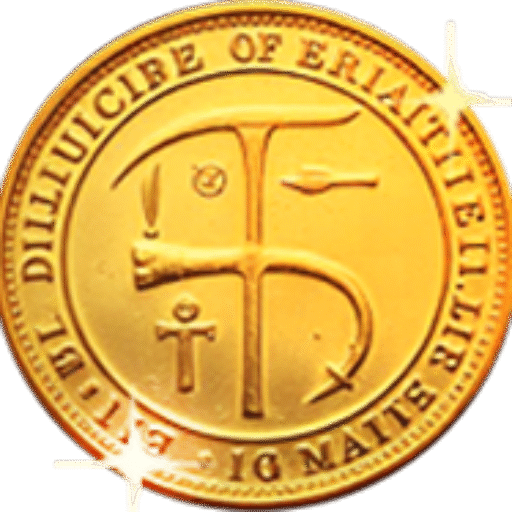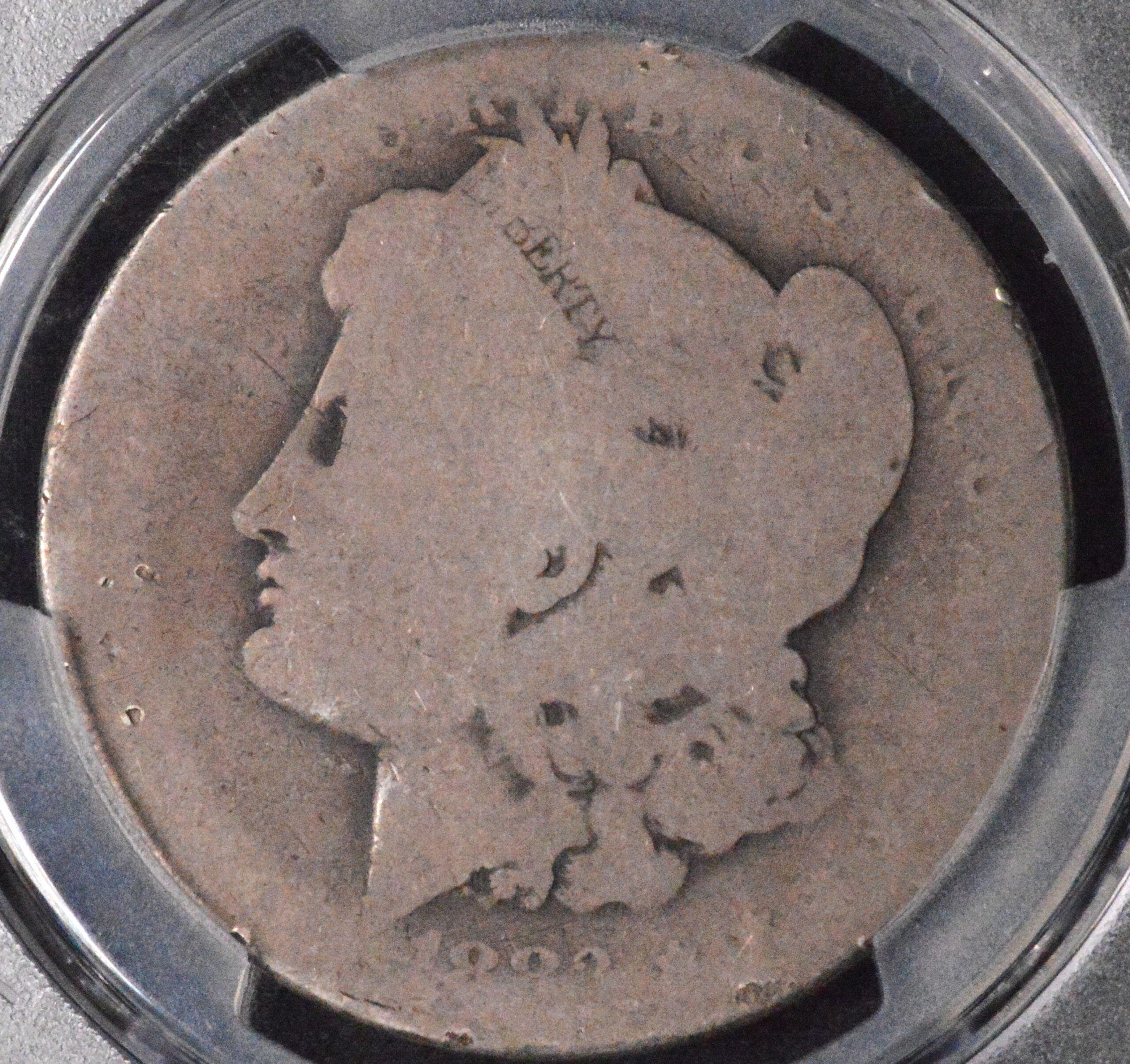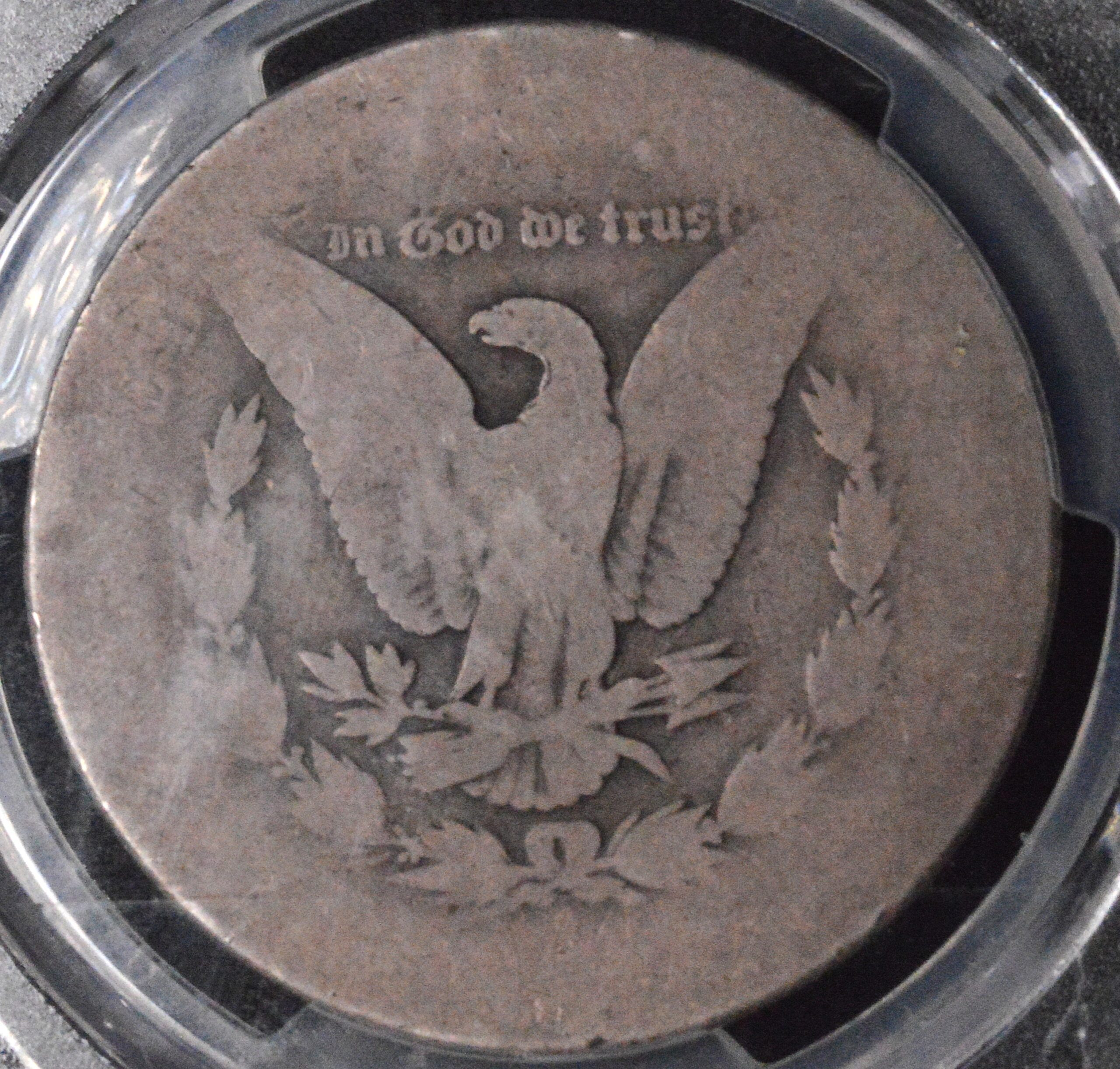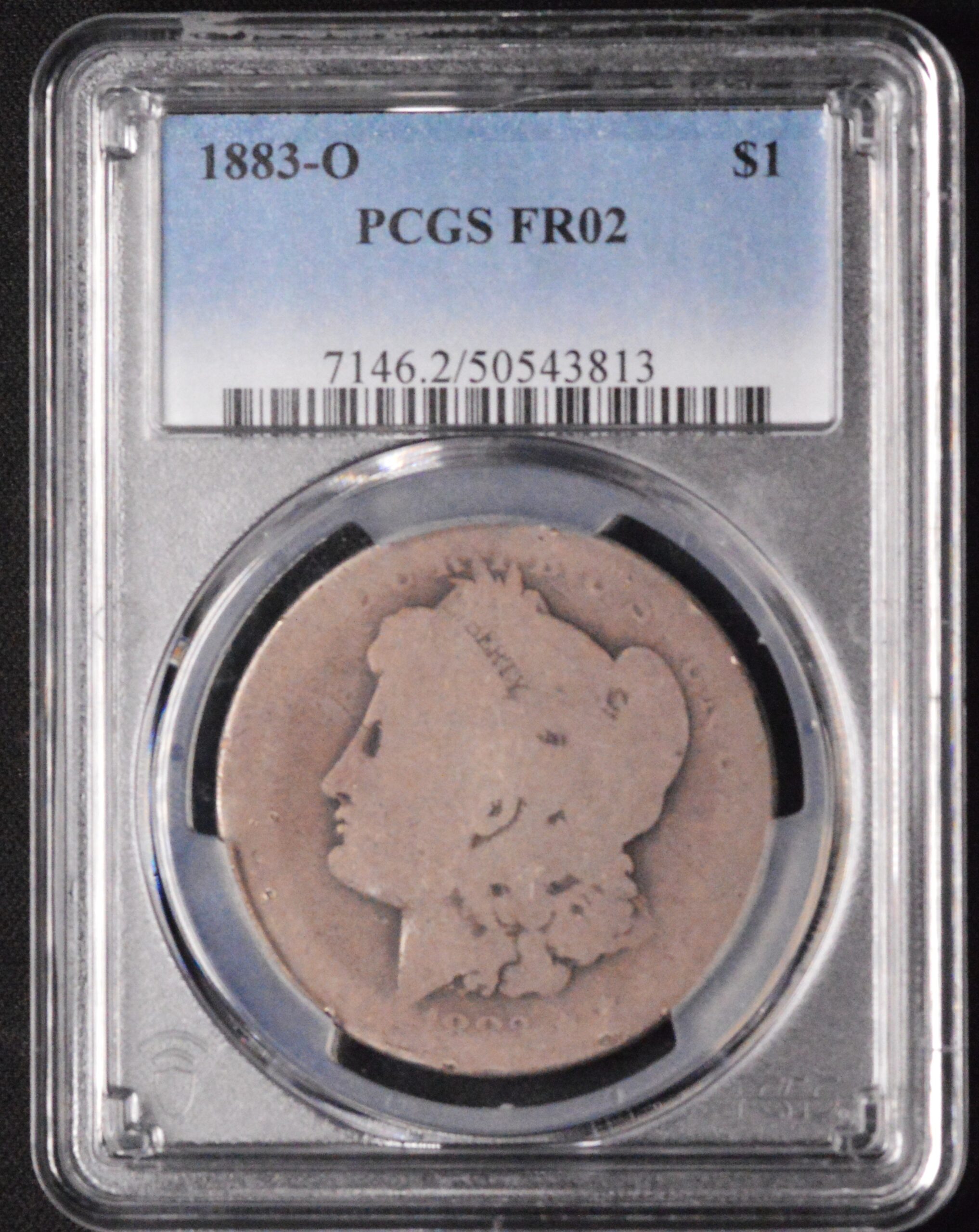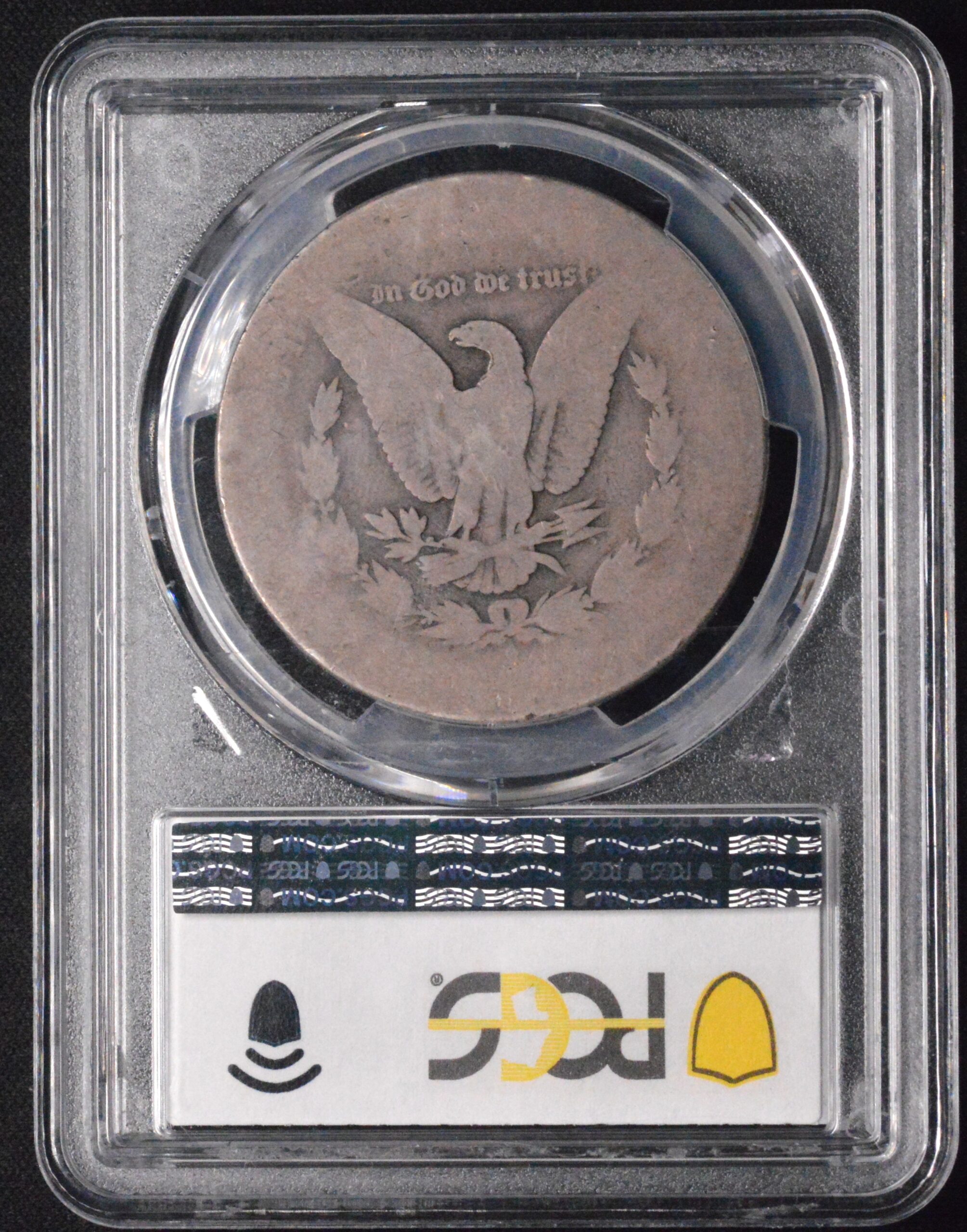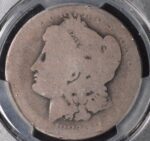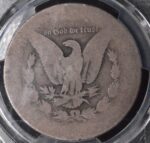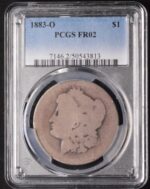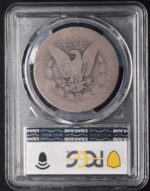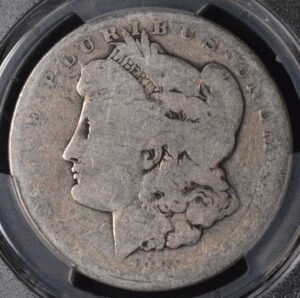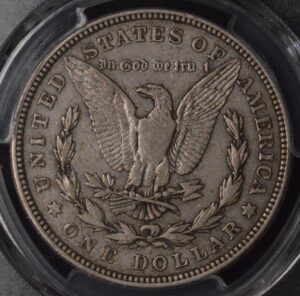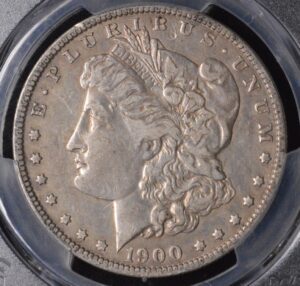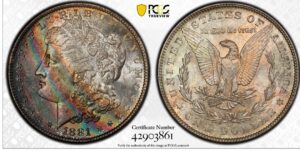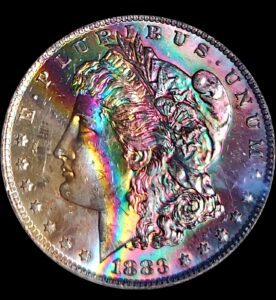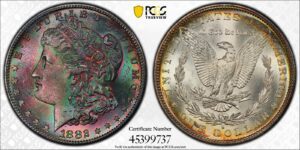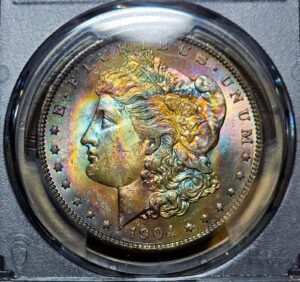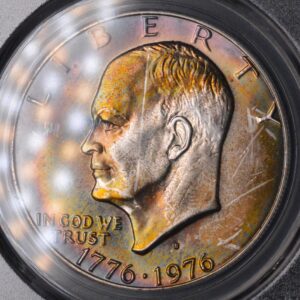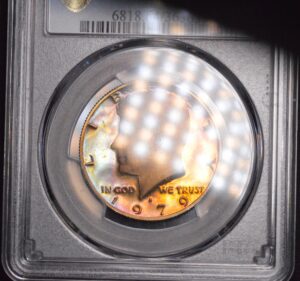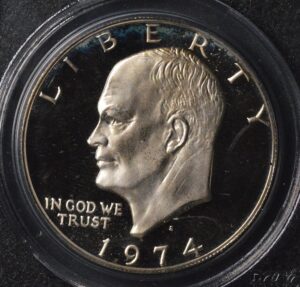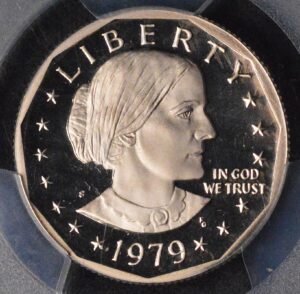Description
The 1883-O Morgan Silver Dollar was struck at the New Orleans Mint, one of the most historically important U.S. minting facilities in the 19th century. Designed by George T. Morgan, the coin is composed of 90 percent silver and 10 percent copper, weighs 26.73 grams, and measures 38.1 millimeters in diameter. It was produced during the era of the Bland-Allison Act, which required the U.S. Treasury to purchase large quantities of silver and turn it into coinage, helping to stabilize Western mining economies.
The obverse depicts Lady Liberty, crowned with cotton and wheat to symbolize the agricultural richness of America, and surrounded by the motto “E PLURIBUS UNUM,” thirteen stars, and the date, 1883. The reverse features the American bald eagle, holding arrows and an olive branch, representing the balance between strength and peace. The “O” mintmark—visible below the wreath—designates the New Orleans Mint, which operated under multiple regimes, including the U.S., the State of Louisiana, and the Confederate States during its long history.
A coin graded PCGS FR02 is classified as Fair (2), the second-lowest possible grade on the scale. It has seen extensive circulation—worn nearly flat—yet still retains essential identifying features such as the date, mintmark, and faint outline of the primary design. While collectors often pursue high-grade Morgan dollars, low-grade “low-ball” examples like this are valued within a special collecting niche. They represent coins that have endured continuous handling over generations, each carrying a unique visual history across their heavily worn surfaces.
The 1883-O Morgan Dollar remains a relic of the post-Civil War American economy and industrial expansion, embodying both the artistry of 19th-century minting and the endurance of U.S. coinage circulation across more than a century. Even a heavily worn “used to death” coin like this stands as an authentic survivor from a defining era of U.S. monetary history.
The 1883-O Morgan Silver Dollar was struck at the New Orleans Mint, one of the most historically important U.S. minting facilities in the 19th century. Designed by George T. Morgan, the coin is composed of 90 percent silver and 10 percent copper, weighs 26.73 grams, and measures 38.1 millimeters in diameter. It was produced during the era of the Bland-Allison Act, which required the U.S. Treasury to purchase large quantities of silver and turn it into coinage, helping to stabilize Western mining economies.
The obverse depicts Lady Liberty, crowned with cotton and wheat to symbolize the agricultural richness of America, and surrounded by the motto “E PLURIBUS UNUM,” thirteen stars, and the date, 1883. The reverse features the American bald eagle, holding arrows and an olive branch, representing the balance between strength and peace. The “O” mintmark—visible below the wreath—designates the New Orleans Mint, which operated under multiple regimes, including the U.S., the State of Louisiana, and the Confederate States during its long history.
A coin graded PCGS FR02 is classified as Fair (2), the second-lowest possible grade on the scale. It has seen extensive circulation—worn nearly flat—yet still retains essential identifying features such as the date, mintmark, and faint outline of the primary design. While collectors often pursue high-grade Morgan dollars, low-grade “low-ball” examples like this are valued within a special collecting niche. They represent coins that have endured continuous handling over generations, each carrying a unique visual history across their heavily worn surfaces.
The 1883-O Morgan Dollar remains a relic of the post-Civil War American economy and industrial expansion, embodying both the artistry of 19th-century minting and the endurance of U.S. coinage circulation across more than a century. Even a heavily worn “used to death” coin like this stands as an authentic survivor from a defining era of U.S. monetary history.
The 1883-O Morgan Silver Dollar was struck at the New Orleans Mint, one of the most historically important U.S. minting facilities in the 19th century. Designed by George T. Morgan, the coin is composed of 90 percent silver and 10 percent copper, weighs 26.73 grams, and measures 38.1 millimeters in diameter. It was produced during the era of the Bland-Allison Act, which required the U.S. Treasury to purchase large quantities of silver and turn it into coinage, helping to stabilize Western mining economies.
The obverse depicts Lady Liberty, crowned with cotton and wheat to symbolize the agricultural richness of America, and surrounded by the motto “E PLURIBUS UNUM,” thirteen stars, and the date, 1883. The reverse features the American bald eagle, holding arrows and an olive branch, representing the balance between strength and peace. The “O” mintmark—visible below the wreath—designates the New Orleans Mint, which operated under multiple regimes, including the U.S., the State of Louisiana, and the Confederate States during its long history.
A coin graded PCGS FR02 is classified as Fair (2), the second-lowest possible grade on the scale. It has seen extensive circulation—worn nearly flat—yet still retains essential identifying features such as the date, mintmark, and faint outline of the primary design. While collectors often pursue high-grade Morgan dollars, low-grade “low-ball” examples like this are valued within a special collecting niche. They represent coins that have endured continuous handling over generations, each carrying a unique visual history across their heavily worn surfaces.
The 1883-O Morgan Dollar remains a relic of the post-Civil War American economy and industrial expansion, embodying both the artistry of 19th-century minting and the endurance of U.S. coinage circulation across more than a century. Even a heavily worn “used to death” coin like this stands as an authentic survivor from a defining era of U.S. monetary history.
CUSTOMER FEEDBACK








Related Products & Newly Released!




SHIPPING POLICY
Your order is shipped from the United States with USPS tracking within one business day.
14 Day Return Policy
You can return your item back within
14 days of the purchase

Secure payments
Your payments are 100% secure and are processed through Square or PayPal on a protected security network.
SHIPPING POLICY
FREE International and Domestic (United States) shipping. Your order is shipped with USPS tracking 24 hours after you order.
14 Day Return Policy
You can return your item back within
14 days of the purchase

Secure payments
Your payments are 100% secure and are processed through Square or PayPal on a protected security network.
RESOURCES
support
Get Fresh Articles!
Sign up now to receive our articles for the latest insights and promotions!
RESOURCES
support
Get Fresh Articles!
Signup our newsletter to get update insight or promotions.

